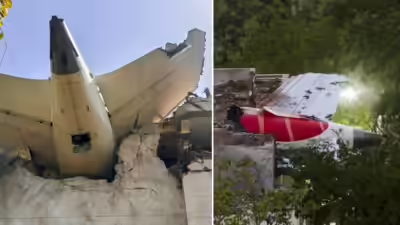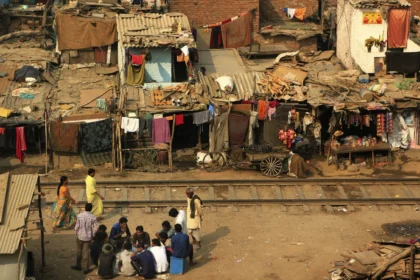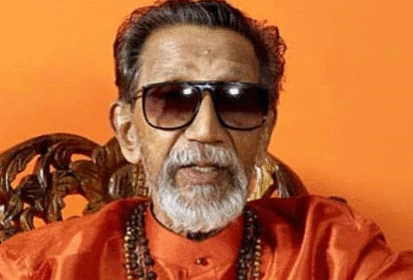A Catastrophe in the Sky — Unraveling the Air India Crash and Its Alarming Technical Failure
The aviation sector has always operated under the twin demands of precision and accountability. But when an aircraft defies those expectations and plummets into tragedy, the aftermath demands more than condolences—it demands answers. The recent Air India plane crash, which claimed multiple lives and sent shockwaves through India’s civil aviation landscape, now has a preliminary investigation report. And what it reveals is as chilling as it is technically revealing: both Engine 1 and Engine 2 cut off within a single second—an occurrence so rare and so catastrophic that it has shaken even seasoned aerospace professionals.
According to the probe findings released this week, investigators have identified a chain of events that began with a sudden loss of thrust from one engine, immediately followed by a simultaneous cut-off in the second. The data recovered from the flight data recorder paints a disturbing picture: within a single second, both engines went dark. That kind of failure—near total loss of power on both sides—is considered a worst-case scenario for any aircraft. It left the pilots with virtually no time to respond, and almost no altitude to attempt a restart or safe landing.
What followed was a rapid descent, a crash that unfolded in mere minutes, and a nation grappling with the sudden loss of passengers and crew who had boarded that flight with nothing but the expectation of safe travel. It wasn’t long before questions began emerging—not just about the engines, but about Air India’s maintenance protocols, the training of crew members, and the overall health of the national carrier’s fleet.
The findings from the Directorate General of Civil Aviation (DGCA), while still preliminary, offer critical insight into what might have gone wrong. One of the key revelations is the possibility of synchronised system failure, a deeply concerning phenomenon that suggests either a flaw in the aircraft’s onboard management software or a deeper, more entrenched mechanical vulnerability. Experts have not ruled out the possibility of fuel contamination, faulty engine sensors, or even pilot error induced by conflicting instrumentation—all of which are now under the microscope.
But beyond the technical causes, the tragedy has re-ignited broader debates: Has Air India, since its privatization and transition into the Tata Group’s stewardship, invested enough in operational safety and fleet modernization? Were warning signs missed in earlier flights? Is there a systemic culture of overlooking near misses and technical irregularities under pressure to meet operational metrics?
For the families of the victims, none of these questions offer solace—but they demand answers. Several legal notices have already been filed by kin of those who perished in the crash, demanding independent probes, compensation, and—most importantly—accountability. There is a growing chorus urging the government to open the investigation beyond DGCA to include international aviation experts and third-party evaluators.
Commercial airliners are among the most sophisticated machines ever built. Redundant systems, automated controls, and rigorous testing protocols are all designed to ensure one thing: even in the worst of circumstances, an aircraft should be able to stay airborne long enough to allow its crew to recover control. At the heart of that engineering philosophy lies the assumption that losing both engines simultaneously is nearly impossible. Yet, in the case of the recent Air India crash, that is precisely what happened—and within just one second of each other.
To understand the gravity of such an occurrence, it’s important to first grasp how engine systems function on commercial aircraft. Most modern jets—including the model involved in the crash—are designed with dual engines not only for power, but for redundancy. If one engine fails, the aircraft can continue flying on the other. This redundancy is backed by layers of monitoring: fuel pressure sensors, thermal sensors, vibration detectors, and electronic control units that provide real-time feedback to pilots and the flight management system.
What makes this case particularly alarming is the synchronous cut-off—where Engine 1 and Engine 2 ceased operations simultaneously, leaving the aircraft in an unpowered glide within seconds. Investigators have pointed to two primary possibilities: either a system-wide mechanical failure affected both engines simultaneously, or a shared systemic factor, such as contaminated fuel or a software malfunction, disrupted both engines’ operation.
Historically, dual-engine failures have been exceedingly rare. Among the most notable was the 2009 US Airways Flight 1549 incident, where both engines were disabled by a bird strike, forcing Captain Chesley “Sully” Sullenberger to land on the Hudson River. But even in that case, the engines were physically damaged by an external event. In contrast, no evidence of external damage or bird strikes has emerged so far in the Air India case. The engines, as far as initial data suggests, simply shut down in flight—a far more complex and potentially preventable failure.
One area under active investigation is the Full Authority Digital Engine Control (FADEC) system—a computerized module that governs engine performance. If FADEC receives incorrect inputs, whether due to sensor failure or corrupted data, it can command engines to throttle down or shut off to prevent catastrophic damage. If both engines’ FADEC units responded to erroneous signals simultaneously, it could explain the near-instantaneous power loss.
Fuel quality is another possibility. Aviation turbine fuel (ATF) must meet strict standards, and samples are typically tested at multiple points: the depot, refueling trucks, and even on the aircraft itself before takeoff. But if contamination occurred within the aircraft’s own fuel lines, or if a delivery batch was compromised, it could explain a systemic failure affecting both engines at once.
Maintenance protocols are also under scrutiny. While Air India has insisted that the aircraft underwent routine inspections, critics argue that routine isn’t always rigorous. With the airline expanding its fleet and routes post-privatization, there are concerns that maintenance teams are overstretched and potentially under pressure to push aircraft into service without comprehensive diagnostics.
Moreover, pilot response is a critical variable. In dual-engine failure scenarios, pilots are trained to follow emergency checklists, attempt restarts, and execute gliding techniques toward the nearest possible landing site. But if both engines cut off at a low altitude—as appears to be the case here—the crew may have had mere seconds to diagnose and act. Whether the flight crew followed correct emergency procedures, or whether system alerts were delayed or misleading, remains part of the DGCA’s ongoing probe.
Aviation safety experts emphasize that such incidents are not typically caused by a single factor. Instead, they are the result of a chain of failures—technical, procedural, and human—that together overwhelm the system. As one former Air India engineer stated anonymously, “You don’t get two engines shutting off unless something went very, very wrong at multiple levels.”
This tragedy has renewed calls for independent technical audits and real-time monitoring of engine telemetry for all Air India aircraft, not just in the aftermath of a crash, but as part of daily operations.
While aviation experts pore over telemetry data, engine logs, and cockpit voice recordings to determine the technical causes of the Air India crash, a parallel story is unfolding in homes across India—one of sudden loss, unanswered questions, and irreparable grief. For the families of the passengers and crew aboard the ill-fated flight, no investigation report can fill the silence that followed the crash. What was a routine journey for dozens became a moment that divided time into “before” and “after.”
Among the victims was Dr. Neha Kapoor, a young pediatrician from Nagpur, traveling to Mumbai for a fellowship interview. Her parents recall how she called just before boarding, reminding them to refrigerate the sweets she had packed for her return. “She said, ‘don’t worry, I’ll be back in two days,’” her father said, his voice hollow. “But she never came back.”
In another corner of Maharashtra, the Sharma family continues to wait for DNA results. Their son, Rahul Sharma, was a final-year engineering student returning from a vacation with college friends. Only fragmented belongings were recovered. The family has been told to remain patient while the forensic teams complete identification of remains—a painful, bureaucratic wait that only deepens the trauma.
For those who survived the crash—whether miraculously spared due to late boarding or ticket cancellations—life has taken on a surreal hue. Survivor’s guilt weighs heavily. Some have chosen to remain anonymous, while others have stepped forward to testify publicly, hoping that sharing their stories might bring accountability or reform.
Vikram Nair, a frequent flier who missed the flight due to a last-minute rescheduling by his office, said he hasn’t been able to sleep properly since. “I keep thinking—what if I had boarded? Would I have seen it coming? Could I have helped someone?” he said. “You don’t just survive a crash by not being in it. Part of you still goes down with that plane.”
What makes the pain sharper for many families is the institutional silence they encounter. While Air India has promised compensation and is cooperating with the investigation, relatives say they have received little proactive support, especially in the initial days. Helplines were reportedly overwhelmed, information sparse, and grief counselors largely absent.
Legal experts say that while India’s aviation policies do require compensation under international conventions such as the Montreal Convention, actual payouts are often mired in procedural delays, disputes over liability, and negotiation with insurers. In some cases, families have had to sign non-disclosure agreements or refrain from legal action in exchange for faster financial settlement—raising concerns about ethical practices in post-crash management.
Meanwhile, grief has turned to anger in many quarters. Protests were held outside Air India’s regional offices in Delhi and Mumbai, demanding transparency, faster DNA identification, and full disclosure of the maintenance logs and aircraft history. Lawyers representing victims’ families have begun filing Public Interest Litigations (PILs), calling for third-party audits of Air India’s fleet and a re-examination of safety protocols across Indian carriers.
This tragedy, like many before it, has also prompted psychological experts to highlight the mental health toll of air disasters, not just on the families but on first responders, airline staff, and even unrelated passengers who now board flights with renewed fear. India, they say, lacks a national framework for trauma counseling in the wake of aviation disasters—a glaring void that often leaves victims emotionally adrift.
One of the most moving moments in the weeks following the crash came during a candlelight vigil held near the crash site. Survivors, family members, and airline staff gathered in silence, holding pictures of loved ones and listening as names were read aloud. It was a rare moment of collective mourning, unity in grief—a reminder that beyond the technical charts and safety checklists, real people were lost, and their memory deserves more than just a line in a report.
As the investigation progresses and public attention begins to drift, the families of the victims remain steadfast in their pursuit—not just of compensation, but of truth, accountability, and structural change. Their hope is not merely for justice, but to ensure that such a failure never repeats itself.
The recent Air India crash has not only spotlighted urgent technical failures but also opened up a deeper inquiry into the airline’s institutional identity. As India’s oldest carrier—once a beacon of national pride and later a bureaucratic symbol of decline—Air India has undergone a dramatic transformation in recent years. Its privatization and subsequent acquisition by the Tata Group marked one of the boldest restructurings in Indian aviation history. But as investigators unravel the events that led to the deadly crash, a critical question now surfaces: has Air India’s transformation kept pace with the operational rigor and safety oversight it desperately requires?
To understand this, one must first consider the legacy that Air India carried into privatization. For decades, the airline operated under state control, burdened by financial losses, aging aircraft, low service quality, and rigid public-sector hierarchies. Maintenance standards varied across fleets. Staffing inefficiencies were widespread. And while the airline retained world-class pilots and engineers, they often worked under outdated systems and limited budgets.
When the Tata Group took control in 2022, there was widespread optimism. The return of the airline to its original founder after 69 years seemed poetic—a symbolic realignment with excellence. The Tatas launched a series of measures: fleet upgrades, digital modernization, brand repositioning, and attempts to improve customer experience. Operational decisions, once tethered to bureaucratic inertia, were now expected to follow market logic and international benchmarks.
But while visible changes occurred at the passenger-facing level—sleeker check-in counters, rebranded menus, cabin crew retraining—the behind-the-scenes overhaul of safety and technical compliance has proven more difficult. Aviation is a field where transformation cannot just be aesthetic; it must be structural, data-driven, and rigorously enforced. And in this regard, many insiders now fear that Air India may have moved too fast without building the internal scaffolding needed for operational safety.
Sources within the airline have acknowledged that since privatization, flight frequency has increased significantly, while the pressure on engineering and ground operations has doubled. At times, aircraft turnaround times have been slashed to boost efficiency—an approach common in low-cost carriers but risky when applied to long-haul or wide-body fleets without proper support. “There’s been a shift in tempo,” said a senior engineer, requesting anonymity. “More flights, faster rotations, higher expectations—but not necessarily more technicians or resources to match that pace.”
Additionally, there is concern about the integration of multiple fleets and staff. Air India has absorbed assets and operations from Vistara, AirAsia India, and Air India Express. Each of these entities brought their own operational philosophies, maintenance SOPs, and vendor networks. Merging these under one umbrella is not just an administrative challenge—it raises safety complexities if checks and documentation aren’t harmonized properly. A disjointed system can lead to oversights in aircraft history, compliance logging, or crew training alignment.
Moreover, the airline’s reliance on outsourced maintenance partners has grown. While third-party engineering companies are common across global aviation, oversight mechanisms must be tight. If contractual vendors fail to flag an engine sensor anomaly, or overlook fuel line inconsistencies, the consequences can be devastating. Post-crash audit teams are now examining whether outsourced MRO (Maintenance, Repair, and Overhaul) staff conducted the last inspection on the ill-fated aircraft and whether those protocols met international standards.
Air India’s leadership has responded by expressing “deep regret” and pledging full cooperation with regulatory authorities. But beyond public statements, there remains a credibility test—not only for the airline, but for the privatization model itself. Can private capital genuinely reform legacy institutions while preserving public safety? Or does profit-driven urgency risk marginalizing the slower, more tedious work of building institutional depth?
Experts in aviation governance believe that privatization, in itself, is not to blame. “There are world-class private carriers across the world with impeccable safety records,” notes aviation strategist Anil Bajoria. “The difference is, they don’t just upgrade their lounges and branding—they invest deeply in backend systems, predictive maintenance, and staff culture. That’s the standard Air India must aim for now, more than ever.”
This crash, painful as it is, represents a stress test for the Tata Group’s stewardship of Air India. The airline has the brand power, funding, and heritage to rebuild itself—not just as a profitable business, but as a benchmark of modern Indian aviation. But to do that, safety cannot be a checkbox. It must be a daily, living culture.
As the probe into the Air India crash gains traction, attention has increasingly turned toward India’s aviation safety watchdog, the Directorate General of Civil Aviation (DGCA)—the statutory body responsible for regulating civil aviation and ensuring flight safety across the country. While technical teams pore over flight data and cockpit recordings, broader concerns loom over the institution that’s meant to prevent such disasters in the first place: Is DGCA adequately equipped to monitor and regulate an aviation industry that is expanding faster than its own capacity to supervise?
In theory, the DGCA has a clear mandate: certify aircraft airworthiness, oversee pilot training and licensing, audit airlines for safety compliance, and investigate incidents and accidents. It is meant to operate with independence, technical authority, and policy teeth. However, in practice, it has often struggled to keep up with the scale, speed, and complexity of India’s growing civil aviation ecosystem.
India is now among the top five aviation markets globally, with thousands of daily flights, multiple carriers, and increasing fleet sizes. Air India alone is in the process of acquiring over 400 new aircraft across domestic and international segments, while low-cost carriers like Indigo and Akasa Air continue to expand aggressively. Yet, the regulator’s staffing and technical depth have not grown proportionally.
According to a 2023 report by the Parliamentary Standing Committee on Transport, DGCA had only around 140 flight operation inspectors, despite being responsible for auditing over 700 aircraft and hundreds of pilots and routes. Many of these inspectors were on short-term contracts, raising concerns about institutional continuity and morale. “You cannot regulate a 21st-century aviation industry with 20th-century tools and manpower,” the report warned bluntly.
The Air India crash may now serve as a tipping point in exposing the risks of this regulatory mismatch. If early findings about dual engine failure and possible maintenance lapses are confirmed, DGCA’s role in preemptive oversight will come under severe scrutiny. Why were these issues not flagged earlier? Were routine audits of Air India’s engineering logs, FADEC configurations, or fuel monitoring protocols insufficient? Did prior incident reports involving this aircraft—or others in the fleet—go unacted upon?
Several aviation insiders suggest that regulatory fatigue and a lack of real-time data integration are central problems. While airlines are expected to report technical issues and flight performance data, the DGCA lacks the infrastructure for live analytics or predictive diagnostics, relying instead on post-incident reviews and paper-based logs. In contrast, aviation regulators in Europe and the U.S. have adopted real-time surveillance systems where anomalies are flagged automatically through onboard telemetry—allowing intervention before disaster strikes.
Another layer of complexity is the relationship between regulator and airline. Critics have long argued that India’s aviation industry suffers from a cozy culture of compliance, where warning signs are occasionally softened, and follow-up actions are diluted under lobbying or political influence. The revolving door between former airline executives and regulatory positions adds to perceptions of conflict of interest.
The DGCA, to its credit, has taken several post-crash steps. It has ordered comprehensive safety audits across major carriers, instructed aircraft maintenance organizations (AMOs) to reverify their protocols, and begun a review of pilot fatigue policies. But industry experts argue that reactive governance is not enough. What’s needed is a structural overhaul: more staff, modern tools, and greater operational independence from the Civil Aviation Ministry.
Beyond technical audits, there is also the issue of passenger trust and public accountability. Unlike countries where regulators hold public hearings or release detailed interim reports with timelines, India’s process remains opaque. Victims’ families have little access to the status of probes unless the media reports on them. Calls are growing for a permanent, independent aviation safety board that functions beyond DGCA’s administrative ambit—much like the U.S. National Transportation Safety Board (NTSB)—and can investigate with transparency and public engagement.
The Air India crash underscores what aviation experts have long feared: that India’s civil aviation sector has outpaced its safety architecture. And while airline ambition has soared, regulatory scaffolding remains dangerously underbuilt.
Also Read : Curtis Campher Creates History: Becomes 1st Man to Take 5 Wickets in 5 Balls – WATCH Incredible Spell








